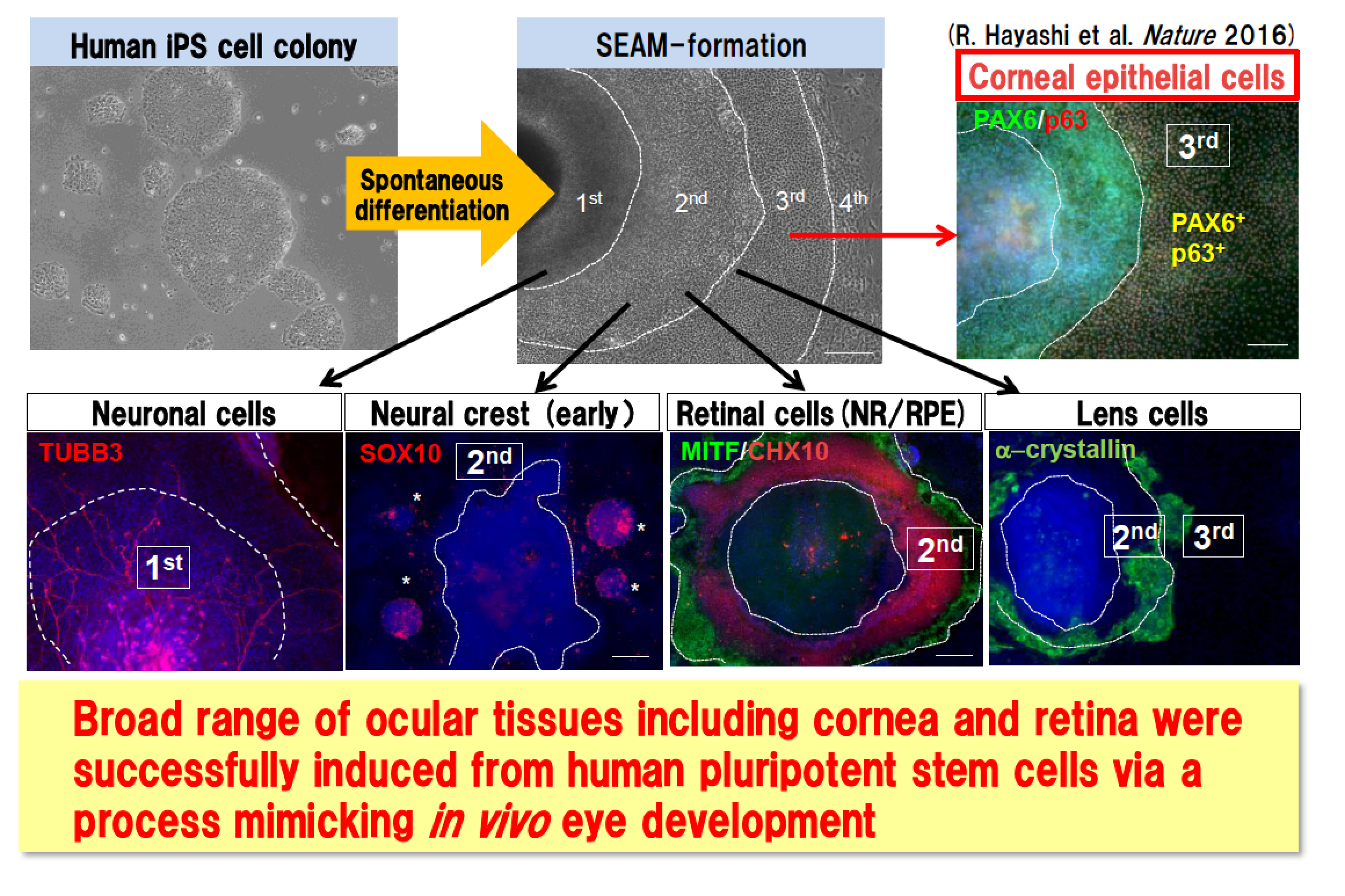Research
1. Pluripotent Stem Cells (iPS cells, ES cells)

Our lab established a unique method of the generation of eye organoids derived from human pluripotent stem cells on a two-dimensional (2D) cell culture system. The organoids are comprised of all cell types over the anterior and posterior segments and are termed a SEAM (a self-formed ectodermal autonomous multi-zone) in which cells formed four distinct concentric zones (Hayashi R, et al. Nature 2016, Nature Protoc. 2017). In each zone, cells exhibit characteristics of different tissues of the developing eye; cornea, retina, lens for example. The 2D-eye organoids are induced by promoting spontaneous differentiation and exquisitely mimicked human eye development. Based on the SEAM method, we successfully conducted first-in-human clinical study on hiPS cell-derived corneal epithelial cell sheet transplantation in regenerative medicine. Our current projects are focused on investigating the mechanism of regulation of cell differentiation on the various ECM scaffolds or physical cell stimulation, and developing a novel approach in regenerative medicine.
2. Mesenchymal Stem Cells (MSCs)
A second ongoing project seeks to address the development of inventive MSC-based therapy. We demonstrated that MSC culture media have anti-EMT (Epithelial-Mesenchymal Transition) effects to corneal epithelial cells and exosomes in MSC culture media exhibit to promote colony formation of corneal epithelial progenitor cells in suppressing differentiated state. Our goal is to propose the therapeutic potential of MSCs and MSC-derived exosomes in the culture media for treatment of different diseases.
3. Corneal epithelial stem cells
Corneal epithelial stem cells, specifically localized in the basal layer of limbus at the border of corneal and conjunctival epithelium, are comprehensively used in a research model of epithelial stem cell lineages. Corneal epithelial cells have distinctive characterization as the avascular and transparent tissue, whereas corneal epithelial stem cells have characterization similar to the other type of epithelial stem cells. Our project is focused on investigating the mechanism of maintaining stemness using corneal epithelial stem cells.

